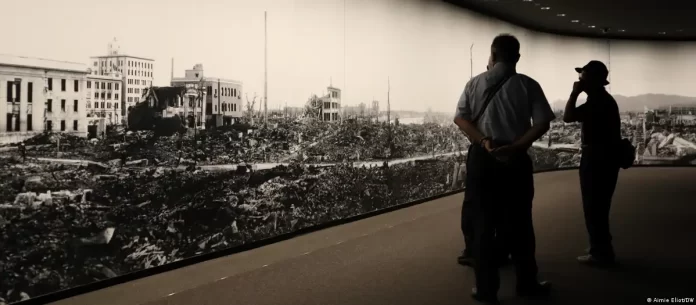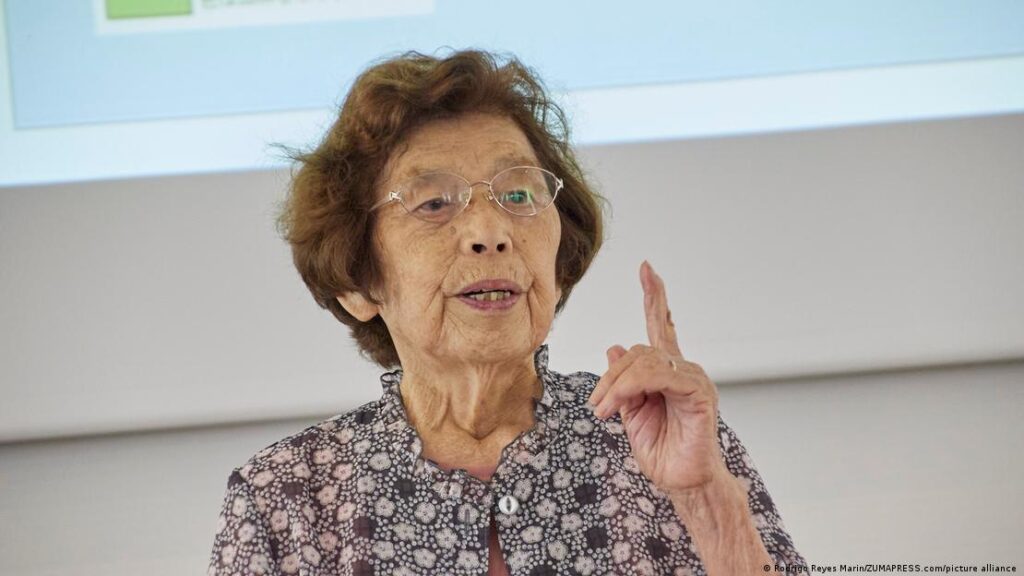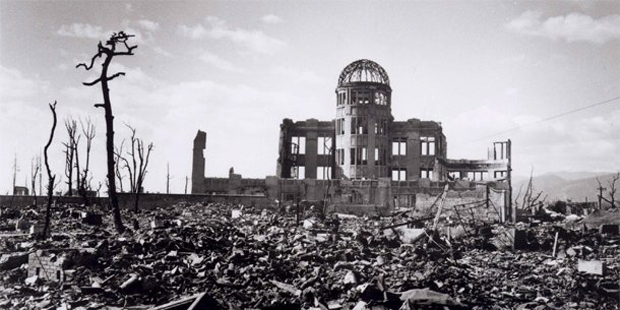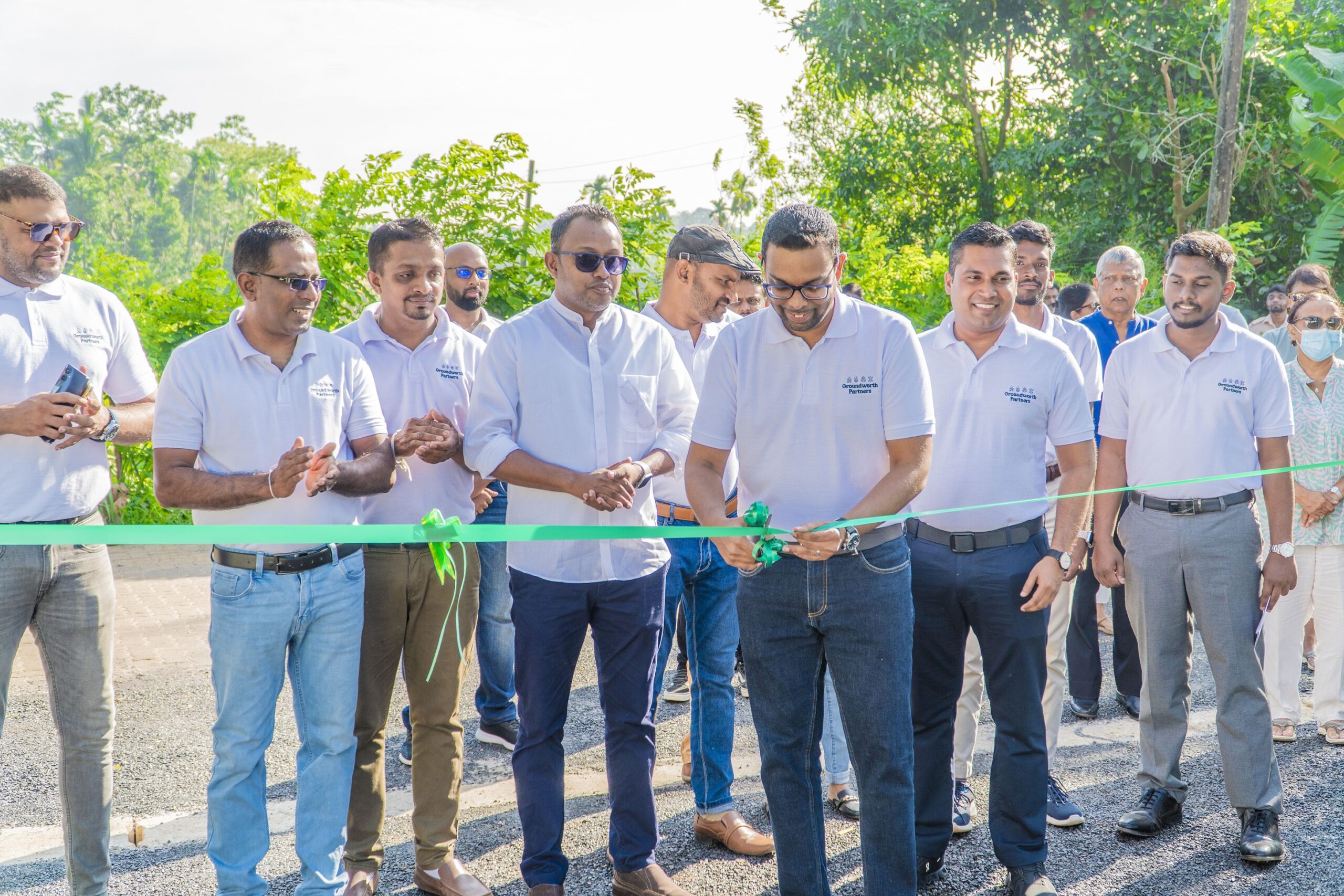
As city pays homage to the victims of the 1945 nuclear bombing, the memories are being preserved by the next generation. Survivors tell stories to “successors”.
“I often compare the explosion to a typhoon that would be a thousand times stronger,” says 90-year-old Sadae Kasaoka while standing on stage in the Hiroshima Memorial Peace Museum. Refusing a microphone, her voice is clear and powerful — though tinged sometimes with sadness or anger — as she tells her story in the museum’s large auditorium.
Her animated speech is sometimes punctuated by brief moments of silence. She closes her eyes as if to better recall the incomprehensible pain of that morning of August 6, 1945 when her life was turned upside down.
The schoolgirl lost her parents in the nuclear bombing that hit her city. She recounts how lucky she was to have stayed at her home, located just 3.5 kilometers (2.2 miles) from the so-called hypocenter of the bomb impact.
Then comes the memory of shattered glass from exploding windows penetrating her skin; the image of her irradiated father she was not able to recognize at first; the wait for her mother’s return that never came. (Also Read | Rebuilding Beirut’s cultural life)
Sitting next to her, Norie Hosomitsu can’t take her eyes off Kasaoka, as if to engrave her image and words in her memory. Part of a generation known as Hiroshima successors, Hosomitsu is committed to passing on the stories of the “hibakusha” (survivors of the bombing) so the world does not forget.

Inspired by Hiroshima survivors
The 60-year-old took part in a program launched by Hiroshima city where candidates write a script based on the life of a survivor and learn to present it in pubic. She has been telling one survivor’s story for nine years, including to middle school students.
“I was touched by Sadae Kasaoka’s personality and her testimony,” Hosomitsu said. “When we met, I felt an alchemy between us.”
“Peace won’t come by sitting back and waiting, each of us has the responsibility to create peace,” she likes to add at the conclusion of each talk.
With the average age of survivors is now 85, it is vital that more successors be trained.
According to Dan Shioka of the International Peace Promotion Department in Hiroshima, the number of hibakusha has been drastically reduced with time.
Even though more than 250 storytellers have been trained so far, “there is an urgent need to pass on this heritage before this memory dies out,” he said.
Fighting for nuclear disarmament
As Hiroshima began on the road to reconstruction soon after the tragedy, it also started to fight for peace.
In 1955, the city created the Mayors for Peace network, which today brings together more than 8,000 municipalities that support the abolition of nuclear weapons.
They reaffirmed their position in an open letter to the G7 heads of state, who met in Hiroshima last May.
The network demanded “immediate action in reducing nuclear arsenals and ending their modernization.”
But the Hiroshima Vision on nuclear disarmament, that was adopted last May, while in favour of abolishing atomic weapons, has not convinced the hibakusha as it contains no concrete plans on nuclear disarmament.
“I was disappointed,” says Norie Hosomitsu. “But frankly speaking, I didn’t have high expectations from the very beginning.”

Spreading the word
While waiting for real measures in favour of a total ban on atomic weapons, survivors and successors are continuing to spread the word through powerful testimonies and daily talks organized at the Hiroshima Memorial Peace Museum.
Renovated in 2019, the venue gives context to the testimonies of survivors through images, objects and texts.
But for Norie Hosomitsu, there’s nothing quite like an in-person encounter. “We already have a lot of videos of the testimonies, but the talks we do are face to face. We express our passion, our emotion, through our face and breath; and each talk is a door open for a dialogue, for an interaction.”
Discrimination that muzzled survivors
Sadae Kasaoka, who suffered discrimination like many hibakusha for decades, spoke out in public for the first time less than 20 years ago. Since then, she has never been silenced.
“As a child, I had dreams, I wanted to become a school teacher. But with one single atomic bomb, dreams, hopes, futures were blown away. I thought it’s my role to transmit the memory of that tragedy and make sure it won’t ever happen again,” she says before looking at Hosomitsu.
“I want to live forever and I want my story to continue to be conveyed. Successors make this possible.”
Source – Deutsche Welle (DW)









